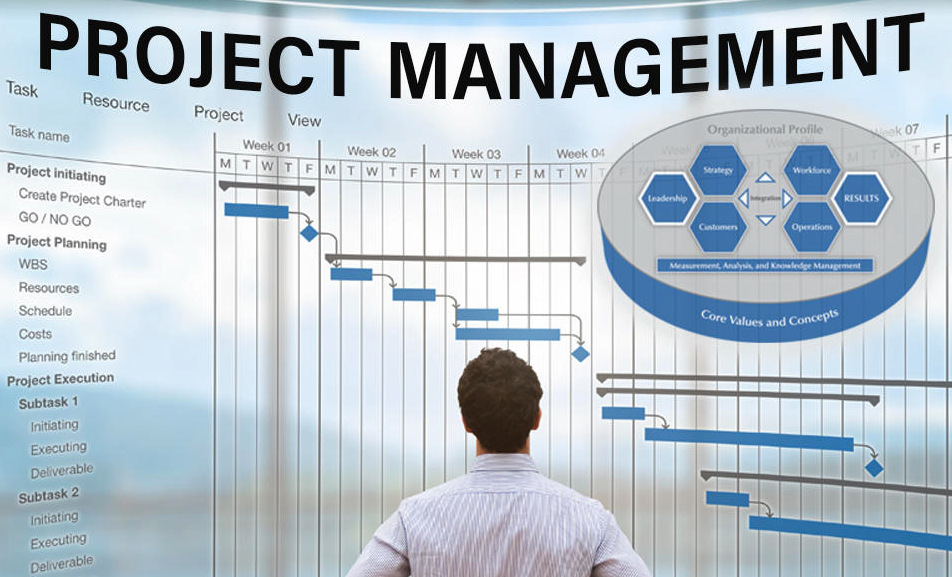

IT Project Management (Image by Forbes)


IT Project Management (Image by Forbes)
IT project management is a vital discipline that directs the successful execution of technology projects.
Essentially, it is the practice of planning, executing and monitoring technology projects to achieve specific goals within time and budget constraints.
The purpose of project management in IT is to offer a structured yet flexible framework that leads technology projects to triumph.
This demands technical expertise, strategic planning, and robust teamwork to ensure timely delivery, cost-effectiveness, and adherence to the desired standards.
The following article explores the fundamental principles and practices vital for successfully executing IT projects, providing valuable insights and tactics for newcomers and experienced professionals.
Time is pressing in the fast-paced technology industry, where IT project management is critical.
The discipline of IT project management guides technology projects from inception to completion, navigating the rapid technological advancements and intense demand for innovation that characterize the landscape.
An IT project management requires a reliable blend of technical expertise and mastery of communication, risk management, and strategic planning to succeed in this dynamic environment.
This combination is advantageous and critical in keeping up with the ever-evolving technological advancements.
Team dynamics and collaboration have a significant impact on project outcomes.
A cohesive IT team includes skilled individuals and fosters an environment where diverse talents and perspectives drive innovation and problem-solving.
Building a cohesive IT team involves promoting a culture of open communication and mutual respect.
Moreover, maintaining a positive team culture is also critical to sustained collaboration.
This can be accomplished by acknowledging and commemorating accomplishments, assisting during difficulties, and ensuring a healthy work-life balance.
Project managers encounter various challenges, such as maintaining team cohesion, ensuring timely communication, and keeping track of multiple tasks and deadlines.
This is why the role of tools and technology cannot be overstated.
Tools and technologies provide a centralized platform to organize tasks, timelines, and resources, streamlining the process.
There are various tools and technologies available for IT project management.
Integrating these tools results in a streamlined, more efficient management process.
Teams can collaborate seamlessly, meet deadlines with greater accuracy, and achieve project goals more effectively.


Agile and waterfall project management methodologies serve different purposes in IT.
The selection between those methodologies should depend on the specific needs and nature of the project.
Agile provides flexibility and responsiveness to accommodate changing requirements, making it a good fit for projects that require continuous adaptation.
The Agile methodology centers around iterative development, breaking the project into smaller units rather than simultaneously delivering it.
For businesses, agile methodology means delivering products that align better with current market demands and meet client expectations.
In contrast, waterfall methodology offers a structured, predictable approach that works best for projects with precise, unchanging requirements.
The primary advantage of the waterfall is its straightforward, structured approach. It is most effective for projects with clearly defined objectives and consistent requirements.
Waterfall methodology provides increased predictability in terms of both project timelines and budgets for businesses.
Budgeting and resource allocation in IT project management require balancing financial constraints with project needs.
Effective strategies involve careful planning, ongoing monitoring, and flexible resource management.
Estimating costs for resources, labor, and expenses is critical to budgeting in IT projects.
Effective budgeting tackles the issue of delivering projects within financial constraints while upholding quality.
Resource allocation in IT project management entails assigning suitable resources, such as team members, equipment, and technology, to the appropriate tasks.
Implementing both practices guarantees the efficient utilization of resources, keeping the project on track financially and operationally.
A few strategies can be employed to optimize resource utilization while adhering to financial constraints:
Continuous monitoring and evaluation are essential to ensure that IT projects stay aligned with their objectives and are completed successfully.
Monitoring and evaluating IT projects ensures they remain aligned with their goals and efficiently executed.
Tools such as project management software, regular team meetings, performance metrics and feedback loops can help MSPs and businesses keep projects on track, identify problems early and ensure successful outcomes.
Monitoring requires continuous observation of the project’s progress to ensure it adheres to the planned schedule, budget, and scope.
Meanwhile, evaluation systematically assesses the project’s progress at different stages. It enables a comprehensive understanding of whether the project is attaining its objectives and delivering the anticipated value.
Let’s consider an IT project management example, specifically the development and implementation of a customized software solution for a business client.
This project involves various activities, including but not limited to initial needs assessment, planning, software design, development, testing, and deployment.
The IT project manager initiates the project by conducting a comprehensive needs analysis to comprehend the client’s specific requirements fully.
The value lies in ensuring the project aligns perfectly with the client’s business objectives and IT strategy.
After defining the project scope, the IT project manager supervises the design and development phase, which involves coordinating a team of developers, designers, and other technical professionals to create the software.
The IT project manager implements monitoring and evaluation processes during the development phase.
After development, the project manager oversees testing and deployment to ensure the software meets all requirements and functions adequately in the client’s operational environment.
Post-implementation review and continuous improvement are essential to ensure IT projects’ long-term success and quality.
The Post-Implementation Review (PIR) and Continuous Improvement are integral components of IT project management, especially for Managed Service Providers (MSPs) and businesses focusing on delivering top-notch IT services.
PIR is conducted after the completion of an IT project to improve the quality of the project.
The main objective of PIR is to assess whether the project has achieved its goals and extract valuable lessons learned from the evaluation process.
The significance of PIR lies in its ability to provide insights that can enhance the outcome of future projects.
At the same time, continuous improvement is about constantly looking for ways to improve project management processes and results. It means applying what is learned from PIR to future projects.
For MSPs and businesses, this entails creating a culture that actively seeks and utilizes feedback to drive improvements.
MSPs and businesses can bolster their project management practices by conducting comprehensive PIRs and adopting a continuous improvement mindset.
This ideal circumstance leads to improved project outcomes and increased client satisfaction.
Step into IT project management with this guide. This journey intertwines technical mastery, strategic understanding, and the art of teamwork.
Imagine applying these distilled principles to your next project as an IT professional or project manager.
This is your gateway to elevating your projects to new levels of excellence. Every step you take with these insights brings you closer to the pinnacle of success.
Visualize yourself leading your next IT project. Each strategy from this guide is a tool in your arsenal, shaping the path to your project’s triumph.
Sharing your experiences and learning from peers isn’t just an activity; it’s an upward spiral, lifting your project management skills higher.
Feel the pride and satisfaction as your project, infused with your dedication and this newfound wisdom, achieves its objectives. And, of course, Octobits is your partner on this journey.
With its sophisticated platform, Octobits redefines IT management, offering a unified dashboard, streamlined login systems, and efficient billing and reporting – all harmoniously integrated to simplify your work.
Imagine a world where your IT environment seamlessly integrates with industry giants like Datto Autotask, Microsoft 365, Azure, AWS, CrowdStrike, and Proofpoint.
Octobits isn’t just a tool; it’s the architect of a cohesive and optimized IT landscape tailor-made for your business needs.